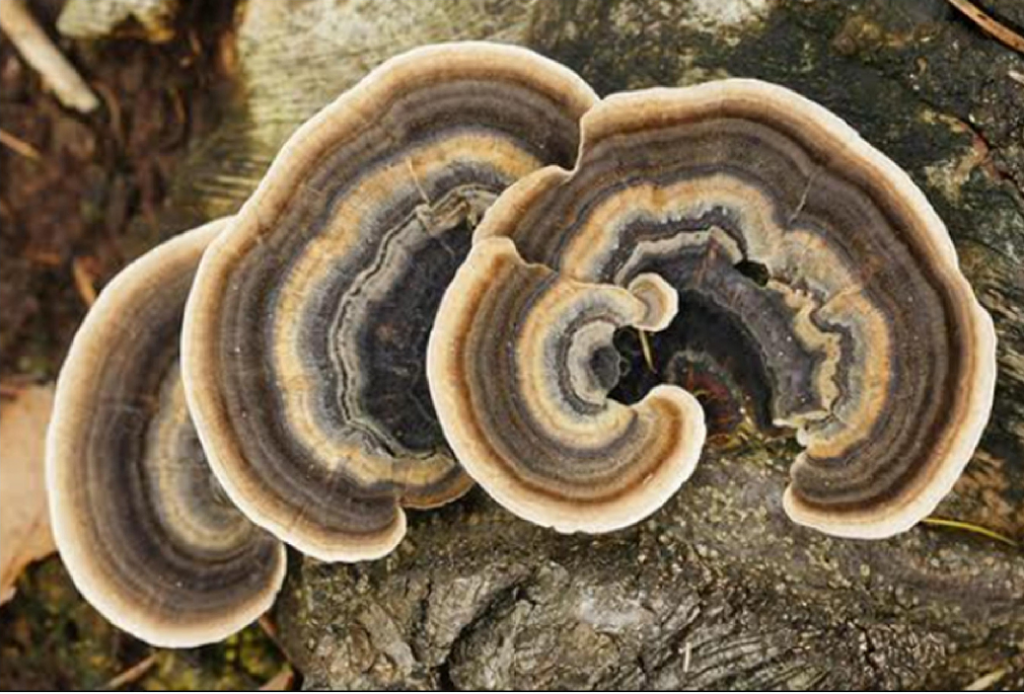Important Facts For Prelims
Fungus for Pyrene Remediation
- 08 Aug 2022
- 6 min read
Why in News?
Researchers at the Council of Scientific & Industrial Research (CSIR) have identified a fungus capable of removing toxic, recalcitrant (Not easily controlled), and carcinogenic Pyrene or Polycyclic Aromatic Hydrocarbons (PAHs) from the environment.
- The researchers used gas chromatographic-mass spectrometer and serotome analysis for their study.
- Gas chromatographic-mass spectrometric identification of prominent metabolites helped determine the pyrene degradation pathway and Serotome analysis in pyrene degradation helped understand the degradation mechanism of pyrene.

What is Pyrene?
- Pyrene, possessing four benzene rings, belongs to the highly toxic class of PAHs, with carcinogenic and mutagenic properties.
- It gets lodged into the environmental matrices like soil, water and atmosphere, resulting in widespread environmental pollution, necessitating adequate remediation of contaminated environmental matrices.
- The rapid pace of economic development and industrialisation has resulted in the release of several PAHs into the environment.
- PAHs are a class of chemicals that occur naturally in coal, crude oil, and gasoline. These are ubiquitous environmental pollutants originating from multiple sources, including combustion of petrogenic fossil fuels, and incomplete incineration of municipal wastes and biomass.
What are the Findings?
- Identified a white-rot fungus Trametesmaxima IIPLC-32, which has the potential to cause microbial degradation of pyrene.
- Growing on dead plants, this fungus causes pyrene degradation using special enzymes.
- The pyrene concentration decreased by 79.8%, 65.37% and 56.37% within 16 days from the initial levels of 10 mg per litre, 25 mg per litre and 50 mg per litre, respectively.
- This fungus acts to decrease the pollution level of the soil.
What are the Implications?
- The fungus can cause microbial degradation, thereby improving the soil quality.
- The fungus T.maxima may prove to be helpful in the remediation of especially pyrene.
What are the Recommendations?
- To combat pollution cause by the rapid pace of economic development and industrialisation, resources are already present in the environment, which must be appropriately tapped by us.
- T.maxima IIPLC-32 can be tried in the future for the bioremediation of PAH-contaminated aquatic environments.
What is Bioremediation?
- Bioremediation is a branch of biotechnology that employs the use of living organisms, like microbes and bacteria to decontaminate affected areas.
- It is used in the removal of contaminants, pollutants, and toxins from soil, water, and other environments.
- Bioremediation is used to clean up oil spills or contaminated groundwater.
- Bioremediation may be done "in situ"–at the site of the contamination–or "ex situ"–away from the site.
UPSC Civil Services Examination, Previous Year Questions (PYQs)
Q. Consider the following organisms: (2013)
- Agaricus
- Nostoc
- Spirogyra
Which of the above is/are used as biofertilizer/biofertilizers?
(a) 1 and 2
(b) 2 only
(c) 2 and 3
(d) 3 only
Ans: (b)
- Biofertilizers are products containing carrier based (solid or liquid) living microorganisms which are agriculturally useful in terms of nitrogen fixation, phosphorus solubilisation or nutrient mobilization to increase the productivity of soil or crop.
- Classification of biofertilizers based on microorganism:
- Bacterial Biofertilizers: Rhizobium, Azospirilium, Azotobacter, Phosphobacteria, Nostoc, etc. Hence, 2 is correct.
- Fungal Biofertilizers: Mycorrhiza
- Algal Biofertilizers: Blue Green Algae (BGA) and Azolla.
- Actinomycetes Biofertilizer: Frankia.
- Agaricus is an edible fungus and is commonly known as mushroom. It is a saprophytic fungus found growing on soil humus, decaying litter on forest floors, in the fields, lawns, wood logs and manure piles. Hence, 1 is not correct.
- Spirogyra is a large genus of freshwater green algae found in shallow ponds, ditches and amongst vegetation at the edges of large lakes, generally growing free-floating. It is valued for human consumption, and is known as an important source of natural bio-active compounds for antibiotic, antiviral, antioxidant, anti-inflammatory, and cytotoxic purposes. Hence, 3 is not correct.
- Therefore, option (b) is the correct answer.
Q. Lichens, which are capable of initiating ecological succession even on a bare rock, are actually a symbiotic association of (2014)
(a) algae and bacteria
(b) algae and fungi
(c) bacteria and fungi
(d) fungi and mosses
Ans: (b)
- Lichen is not a single organism. Rather, it is a symbiosis between different organisms – a fungus and an alga or cyanobacterium. Cyanobacteria are sometimes referred to as ‘blue-green algae’, though they are quite distinct from the algae.
- Lichens are amongst the first organisms to colonize the barren surfaces (e.g., road cuttings, rock outcrops and volcanic ash) and prepare these areas for later plants by trapping moisture and windblown organic debris and then contributing to the organic deposits when they themselves die and decay.
- Therefore, option (b) is the correct answer.




